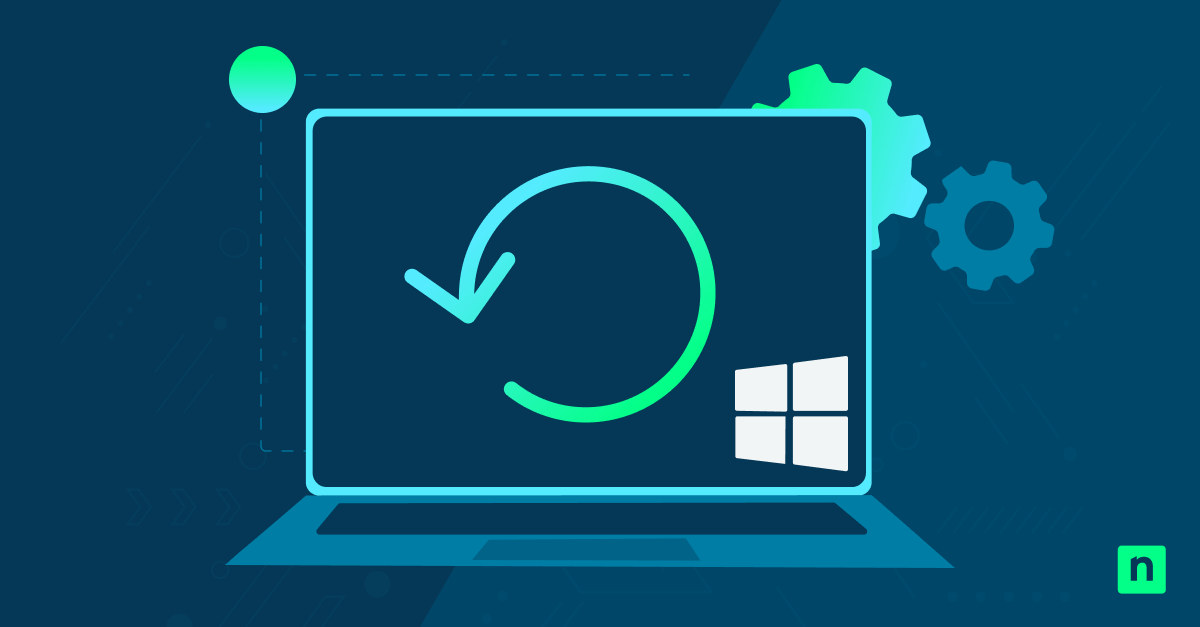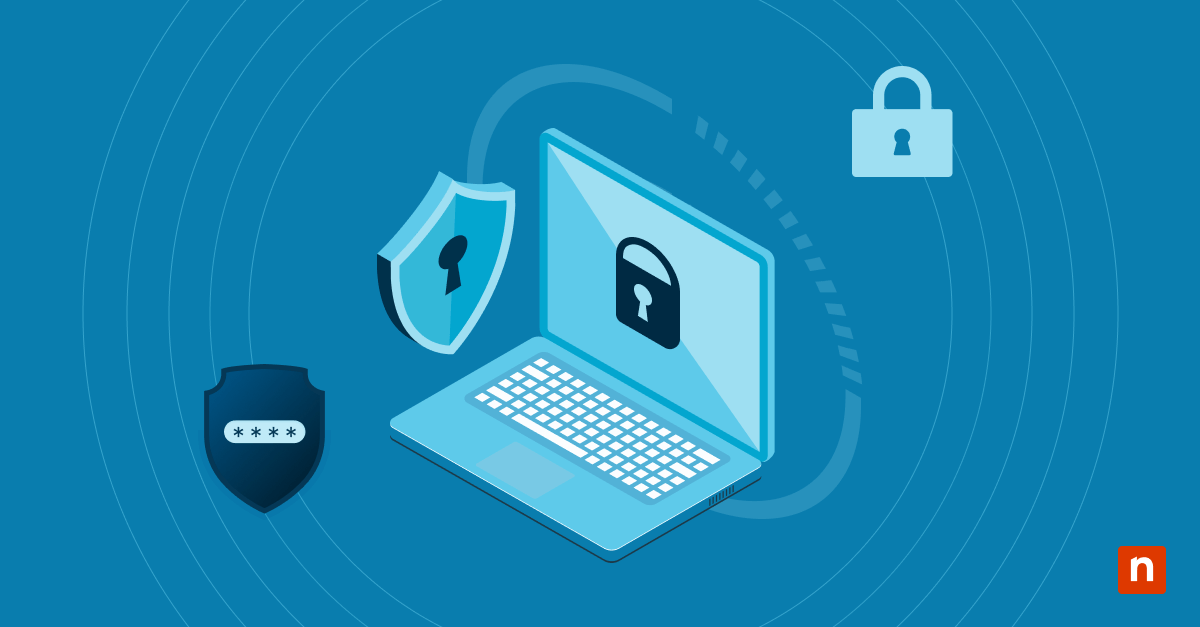Securing your Windows local account is essential, and one of the most effective ways to do this is by setting up security questions. These questions serve as an extra layer of protection, allowing you to reset your password if you ever forget it. Windows 10 and 11 both offer this feature, though accessing and updating these security questions differs between the two operating systems.
In this guide, we’ll walk you through the process of updating security questions for local accounts in both Windows 10 and Windows 11, ensuring you can always regain access to your system when needed.
Understanding security questions in Windows
Security questions serve as an essential recovery mechanism for local accounts in Windows 10 and 11, providing an extra layer of protection that allows users to reset their passwords if they forget them. When you set up a local account with a password in Windows, you’re required by default to select and answer three security questions from a predefined list. These questions function as a verification method to confirm your identity before allowing you to reset your password directly from the sign-in screen.
Purpose and role of security questions in account recovery
The primary purpose of security questions is to offer a straightforward way to regain access to your account without requiring additional tools or devices. If you forget your password, you can click “Reset password” at the login screen after entering an incorrect password, answer your security questions correctly, and then create a new password. This self-service recovery option helps minimize downtime and maintains productivity, especially important in business environments.
Windows 10 and 11 provide several standard security questions to choose from, including:
- What was your first pet’s name?
- What’s the name of the city where you were born?
- What was your childhood nickname?
Difference between security questions and other recovery options
Security questions differ from other recovery methods in several important ways:
- Local vs. Microsoft Accounts: Security questions exist exclusively for local accounts, while Microsoft accounts employ different recovery methods such as email or phone number authentication and two-factor authentication.
- Self-contained Recovery: Unlike password reset disks or recovery drives, security questions don’t require any external devices or preparation beforehand.
- Simplicity: The security question method is more straightforward than command prompt approaches, which require technical knowledge.
Limitations of Security Questions for Local Accounts
Despite their convenience, security questions have significant limitations:
1. Security Vulnerabilities
According to research, security questions are fundamentally insecure because their answers are often easily guessable or discoverable through web searches and social media.
2. Memorability vs. Security Tradeoff
Security questions typically suffer from a fundamental flaw—their answers are either somewhat secure or easy to remember, but rarely both.
3. Consistency Issues
Some security question answers may change over time, such as favorites or opinions, making them unreliable for long-term account recovery.
4. Guessability
Common answers to security questions can be surprisingly predictable. For example, research shows someone would have a 20 percent chance of correctly guessing that an English-speaking user’s favorite food is pizza.
Due to these limitations, many security experts recommend using security questions only as a supplementary recovery method rather than the primary means of account protection.
Prerequisites and requirements
Before updating security questions for local accounts in Windows 10 and 11, it’s essential to ensure your system meets the necessary requirements and you have the appropriate permissions.
Windows 10 & 11 system requirements
Windows 10 and Windows 11 have different minimum system requirements that must be met to run the operating system effectively:
Windows 10 minimum requirements:
- Processor: 1 GHz or faster
- RAM: 2 GB for 32-bit or 64-bit
- Storage: 16 GB for 32-bit or 20 GB for 64-bit
- Graphics: DirectX 9 compatible device with WDDM 1.0 driver
Windows 11 minimum requirements:
- Processor: 1 GHz or faster with two or more cores on a compatible 64-bit processor
- RAM: 4 GB or greater
- Storage: 64 GB or greater
- Graphics: DirectX 12 compatible with WDDM 2.0 driver
- System firmware: UEFI, Secure Boot capable
- TPM: Trusted Platform Module (TPM) version 2.0
Account type: Local vs. Microsoft account
It’s important to understand the difference between local and Microsoft accounts:
Local accounts:
- Keep user data strictly on the device
- Do not link Windows to an online identity
- Offer offline functionality
- Require security questions for password recovery
Microsoft accounts:
- Sync data across multiple devices
- Link Windows to an online Microsoft identity
- Provide access to Microsoft services
- Use different recovery methods like email or phone authentication
Administrator permissions needed to modify security questions
To update or modify security questions for local accounts, you must have administrator permissions on the Windows system. This is crucial because:
- Only administrators can access certain system settings
- Changes to security features require elevated privileges
- Administrator access ensures that only authorized users can modify account security settings
Ensure you’re logged in with an administrator account before attempting to update security questions. If you’re using a standard account, you’ll need to switch to an administrator account or have an administrator assist you with the process.
How to add security questions for a local Windows account
Adding security questions to your local Windows account provides an essential recovery method if you ever forget your password. The process differs slightly between Windows 10 and Windows 11, but both operating systems offer this important security feature.
Step-by-step guide for Windows 10
- Sign in to your local account on your Windows 10 device.
- Open Settings by clicking the Start menu and selecting the gear icon, or by pressing Windows key + I.
- Navigate to Accounts and then select Sign-in options from the left sidebar.
- Under the Sign-in options section, locate and click on Password to expand this option.
- Click on the Update your security questions link that appears.
- Enter your current local account password when prompted and click OK to verify your identity.
- You’ll now see a screen where you can select three security questions from dropdown menus. Choose questions that are meaningful to you but not easily guessable by others.
- Enter your answers for each question. Remember that these answers are case-sensitive, so be consistent with capitalization.
- After completing all three questions and answers, click Finish to save your settings.
- You can now close the Settings app. Your security questions are properly configured.
Step-by-step guide for Windows 11
The process in Windows 11 is less straightforward as Microsoft doesn’t provide a direct option in Settings:
- Sign in to your local account on your Windows 11 device.
- Press Windows key + R to open the Run dialog box.
- In the Run dialog, type or copy-paste the following command: ms-cxh://setsqsalocalonly
- Press Enter or click OK to execute the command.
- When prompted, enter your local account password (not PIN) and click OK to verify your identity.
- You’ll see a screen where you can select three security questions from dropdown menus.
- Choose your security questions and provide answers for each one. Make sure to use answers you’ll remember but others wouldn’t easily guess.
- After completing all three questions and answers, click Finish to save your settings.
How to update or change security questions
Adding security questions to your local Windows account provides an essential recovery method if you ever forget your password. The process differs slightly between Windows 10 and Windows 11, but both operating systems offer this important security feature.
Step-by-step guide for Windows 10
- Sign in to your local account on your Windows 10 device.
- Open Settings by clicking the Start menu and selecting the gear icon, or by pressing Windows key + I.
- Navigate to Accounts and then select Sign-in options from the left sidebar.
- Under the Sign-in options section, locate and click on Password to expand this option.
- Click on the Update your security questions link that appears.
- Enter your current local account password when prompted and click OK to verify your identity.
You’ll now see a screen where you can select three security questions from dropdown menus. Choose questions that are meaningful to you but not easily guessable by others.
Enter your answers for each question. Remember that these answers are case-sensitive, so be consistent with capitalization.
After completing all three questions and answers, click Finish to save your settings.
You can now close the Settings app. Your security questions are properly configured.
Step-by-step guide for Windows 11
The process in Windows 11 is less straightforward as Microsoft doesn’t provide a direct option in Settings:
- Sign in to your local account on your Windows 11 device.
- Press Windows key + R to open the Run dialog box.
- In the Run dialog, type or copy-paste the following command: ms-cxh://setsqsalocalonly
- Press Enter or click OK to execute the command.
- When prompted, enter your local account password (not PIN) and click OK to verify your identity.
You’ll see a screen where you can select three security questions from dropdown menus.
Choose your security questions and provide answers for each one. Make sure to use answers you’ll remember but others wouldn’t easily guess.
After completing all three questions and answers, click Finish to save your settings.
Choosing strong and memorable security questions
When setting up security questions, follow these best practices:
- Select questions with unchanging answers: Choose questions with answers that won’t change over time. For example, “What was the name of your first pet?” has a permanent answer, while “What’s your favorite movie?” might change.
- Use specific and personal questions: Good security questions have answers that are specific to your life experiences but aren’t publicly available. “In what city did your parents meet?” is better than “What city were you born in?” which might be easily found online.
- Avoid common or guessable answers: Don’t select questions with limited answer possibilities or common responses. For instance, “What’s your favorite color?” has too few possible answers and is easily guessable.
- Consider memorability: Choose questions you can easily remember the answers to, even years later. The best security questions balance security with memorability.
- Be consistent: When answering security questions, be consistent with spelling, spacing, and capitalization. Some systems are case-sensitive, so “New York” and “new york” might be treated as different answers.
- Don’t use the same questions across accounts: Use different security questions for different accounts to prevent a security breach on one platform from compromising others.
By following these guidelines, you’ll create a robust security question system that provides effective account recovery while maintaining strong security for your Windows local account.
Troubleshooting common issues
Even with the straightforward process of setting up security questions, users may encounter various issues that prevent them from properly configuring or using this security feature. Here’s how to address the most common problems:
Security questions option missing or unavailable
If you can’t find the option to set or update security questions, there are several possible causes:
Group Policy Settings: The most common reason for missing security questions is that they’ve been disabled via Group Policy. To resolve this:
- Press Win+R to open the Run dialog
- Type gpedit.msc and press Enter
- Navigate to Computer Configuration > Administrative Templates > Windows Components > Credential User Interface
- Look for “Prevent the use of security questions for local accounts“
- Set it to “Not Configured” or “Disabled“
Registry Settings: If Group Policy doesn’t show any issues, check the Registry:
- Press Win+R and type regedit
- Navigate to HKEY_LOCAL_MACHINE\SOFTWARE\Policies\Microsoft\Windows\System
- Find the NoLocalPasswordResetQuestions value
- Set it to 0 or delete the value entirely
Windows 11 Interface: In Windows 11, Microsoft removed the direct option from Settings. Use the command ms-cxh://setsqsalocalonly in the Run dialog to access the security questions interface.
What to do if you forget your answers or are locked out
- Try variations: Security answers are case-sensitive, so try different capitalizations of your answers.
- Use a password reset disk: If you previously created a password reset disk, you can use it by clicking “Reset password” at the login screen when prompted that your password is incorrect.
- Use another admin account: If you have access to another administrator account on the same computer, you can reset the password for the locked account.
- Third-party password reset tools: As a last resort, you can use specialized password recovery tools like EaseUS WinRescuer to reset your Windows password, though this requires creating bootable media on another computer.
Resetting security questions when logged in
To reset or update your security questions when you’re already logged into your account:
For Windows 10:
- Go to Settings > Accounts > Sign-in options
- Click on Password to expand the options
- Click “Update your security questions“
- Enter your current password when prompted
- Select new questions and provide answers
For Windows 11:
- Press Win+R to open the Run dialog
- Type ms-cxh://setsqsalocalonly and press Enter
- Enter your current password when prompted
- Select new questions and provide answers
- Click “Finish” to save your changes
Errors when setting or updating security questions
If you encounter errors when trying to set up or change security questions in Windows:
- “Unable to set security questions” error: This typically occurs when security questions have been disabled at the system level. Follow the Group Policy or Registry steps mentioned earlier.
- Command not recognized: If the ms-cxh://setsqsalocalonly command doesn’t work in Windows 11, ensure you’re typing it correctly with no spaces.
- Password verification fails: Make sure you’re entering your current local account password (not PIN) when prompted during the security question update process.
- Questions not appearing at login: If you don’t see the reset password option when entering an incorrect password, your security questions might not be properly configured. Log in with your password and set them up again.
- “This feature requires removable media”: If you see this message when trying to reset your password, it means your system is configured to use password reset disks instead of security questions. You’ll need to use a password reset disk or access your account through another method.
By addressing these common issues, you can ensure that your security questions are properly configured and available when needed, providing an important recovery option for your local Windows account.
Best practices for Windows security questions
While security questions can be a helpful recovery tool, they can also be a weak point in your account security if not implemented correctly. Follow these best practices to enhance the effectiveness of your security questions and overall account protection.
Choosing secure and difficult-to-guess answers
- Use complex answers: Instead of simple one-word answers, use phrases or sentences that are meaningful to you but difficult for others to guess.
- Incorporate false information: Consider using partially false answers that you can remember. For example, if asked about your first pet’s name, you might answer “Whiskers is a turtle” instead of just “Whiskers”.
- Create a personal code: Develop a system for answering security questions that only you know. For instance, always add your birth month to the end of each answer.
- Use unrelated answers: Choose answers that have no logical connection to the question. For the question “What was your first car?”, you might answer with your favorite food.
- Avoid common answers: Don’t use generic responses like favorite colors or common pet names that could be easily guessed.
- Don’t reuse answers: Use different answers for each security question, and don’t reuse answers across different accounts or platforms.
- Don’t use family information: Avoid using information about your family members, especially if it’s something they might share on social media.
- Beware of shoulder surfing: When entering your security question answers, be aware of your surroundings to prevent others from seeing your responses.
Alternative account recovery options for better security
While security questions are a common recovery method, there are more secure alternatives you should consider:
- Two-factor authentication (2FA): Use a second device or method to verify your identity when logging in. This could be a code sent to your phone or generated by an authenticator app.
- Backup codes: Generate a set of one-time use codes that you can store securely offline and use to regain access to your account.
- Recovery email: Set up a separate email address specifically for account recovery purposes. Ensure this email account is highly secure and not linked to your primary accounts.
- Hardware security keys: Use physical USB or NFC devices as an additional layer of security for logging into your accounts.
- Biometric authentication: Utilize fingerprint or facial recognition features on your devices for more secure access.
- Password managers: Use a reputable password manager to generate and store complex, unique passwords for all your accounts.
- Recovery phone number: Add a trusted phone number to your account for SMS-based recovery options.
By implementing these best practices and considering alternative recovery methods, you can significantly enhance the security of your Windows local account and reduce the risk of unauthorized access. Remember, the goal is to create a balance between security and accessibility that works best for your individual needs.
Frequently Asked Questions (FAQ)
Can I remove security questions once set?
Security questions in Windows 10 and Windows 11 local accounts cannot be completely removed once they’ve been set up, but there are workarounds to effectively disable them. The most straightforward method is to use Group Policy Editor or Registry Editor to disable the security questions feature system-wide.
What happens if I forget my security answers?
If you forget both your local account password and your security question answers, you’ll need to use alternative methods to regain access to your account:
- Use another administrator account: If you have access to another administrator account on the same computer, you can use it to reset the password for the locked account.
- Use a password reset disk: If you previously created a password reset disk (a USB drive configured for password recovery), you can use it by clicking “Reset password” at the login screen after entering an incorrect password.
- Command prompt recovery: Advanced users can boot into recovery mode and use command prompt tools to reset the password, though this requires technical knowledge.
- Third-party password recovery tools: Various third-party tools can help reset Windows passwords, though these should be used with caution and only on your own systems.
Without access to any of these alternatives, you may need to reset Windows entirely, which would result in data loss if your files aren’t backed up elsewhere.
Do security questions work for Microsoft accounts?
No, security questions function differently for Microsoft accounts compared to local accounts. Microsoft accounts do not use the same security question system that local Windows accounts do. Instead, Microsoft accounts rely on email or phone verification, Microsoft Authenticator app, and recovery codes.
How often should I update security questions?
While Microsoft doesn’t provide official guidance on how frequently to update security questions for local accounts, security best practices suggest that you update after significant life changes, if you suspect compromise, and when changing passwords.
In summary
Security questions for local accounts in Windows 10 and 11 serve as an important, albeit imperfect, tool for account recovery. While they offer a convenient way to regain access to your account if you forget your password, they also come with inherent security risks.
By following the best practices outlined in this guide, you can significantly enhance the effectiveness of this feature. However, it’s crucial to remember that security questions should be just one part of a comprehensive security strategy. Consider implementing stronger authentication methods like two-factor authentication, biometrics, or hardware security keys for optimal protection.
Ultimately, the goal is to strike a balance between accessibility and security that suits your individual needs while safeguarding your valuable data and digital identity.








